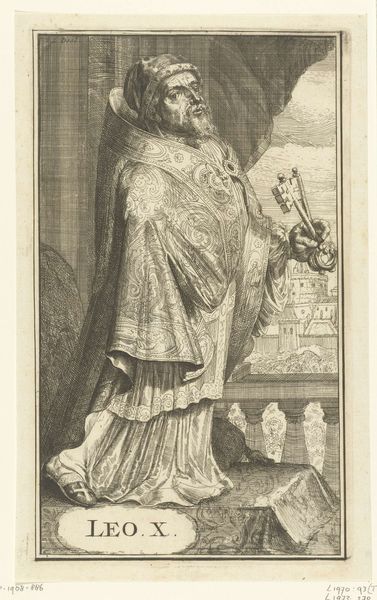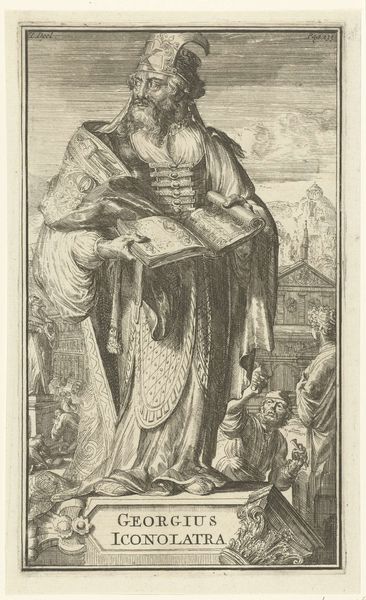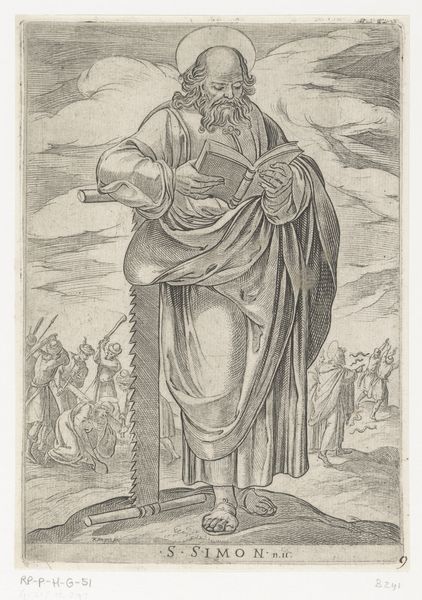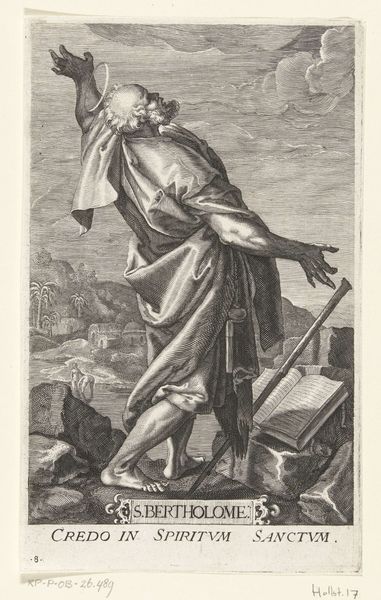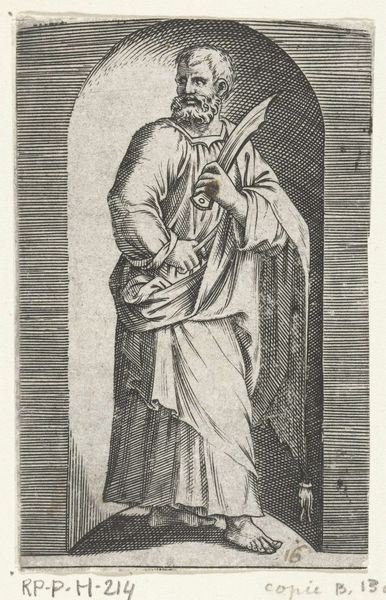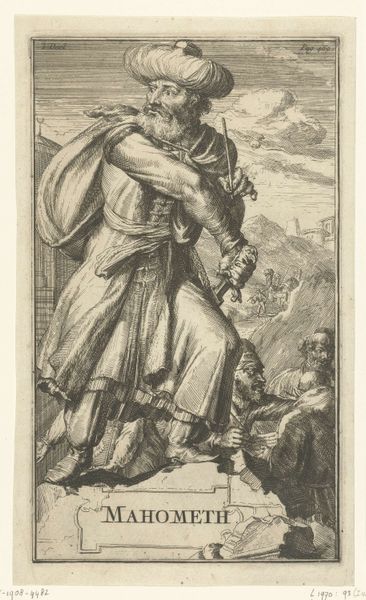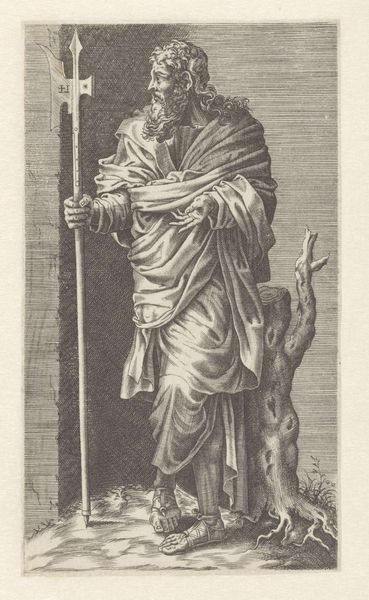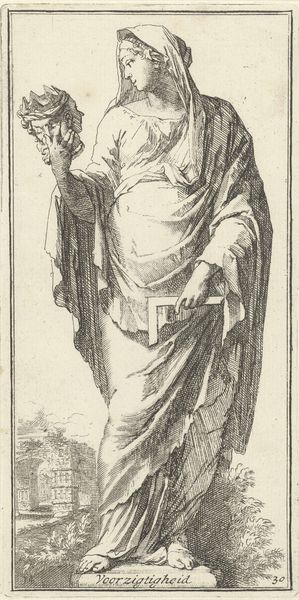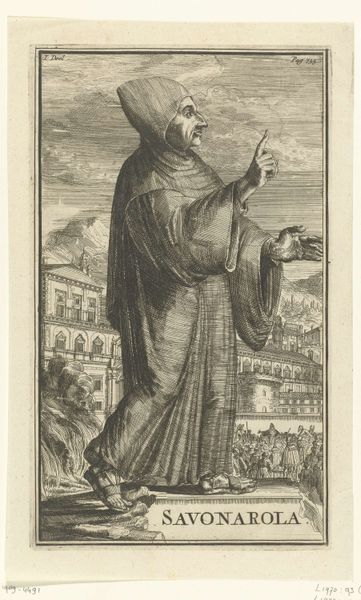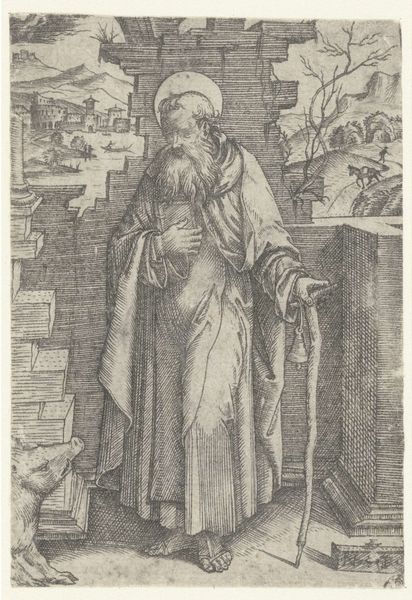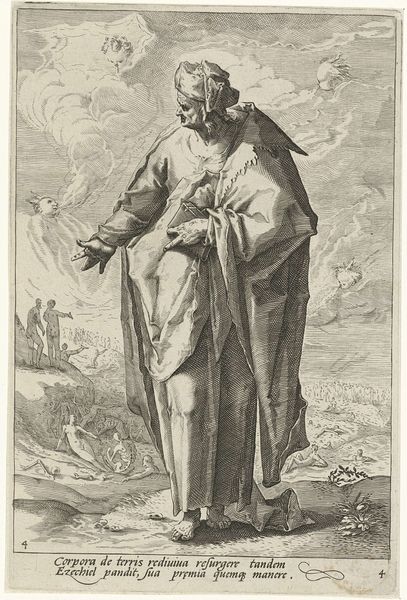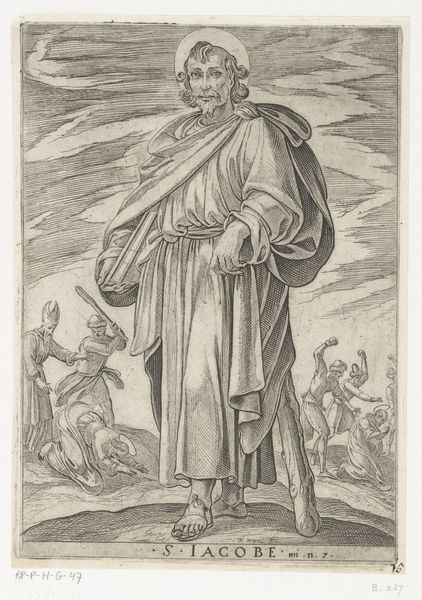
engraving
#
portrait
#
baroque
#
figuration
#
line
#
history-painting
#
engraving
Dimensions: height 270 mm, width 160 mm
Copyright: Rijks Museum: Open Domain
Curator: Looking at this engraving, what first comes to mind? He seems burdened by thought. Editor: He does! I find it so intriguing; he exudes this world-weariness, doesn't he? As if he's seen too much or perhaps is grappling with some immense internal struggle. A melancholic figure rendered in such fine lines... The figure emerges within Baroque sensibilities. Curator: Exactly. What we have here is "Portret van Macedonius", an engraving created in 1701 by Romeyn de Hooghe, currently residing at the Rijksmuseum. It captures this... well, let's delve into it, shall we? Editor: Tell me more about the 'Macedonius' depicted and the function of a piece like this in 1701. Who was supposed to view it? What was it meant to communicate? Curator: Macedonius was an Eastern Roman Emperor in the early 4th century CE... but more precisely, he also happens to be one in a set of 57 emperors. The Rijksmuseum states that this engraving could have come from "Images of Roman Emperors and Empresses, ca. 1700-1750." Therefore, a series like this helps the elites remember history with visual devices that trigger easy associations of the past. Editor: So it's a history lesson disguised as art, intended to cement dynastic power and imperial legitimacy. It's really the manipulation of imagery for the elites to preserve dominance. Curator: Well said. The controlled distribution of knowledge reinforces existing power structures, yes? Beyond the sociopolitical aspect, how do you perceive de Hooghe's execution? What does his process say to you? Editor: The stark lines and monochrome palette create an austere, almost academic feel. The rendering of fabrics seems laborious, meticulously documented, but somehow it makes him less human, more symbolic. Curator: Precisely! He’s a figure representing a specific concept. An idea, rather than an intimate depiction of a man. The use of line mimics old-world academic drawings from antiquity that focus on technique over representation. Editor: That reminds us that art so often becomes an echo chamber of previous power structures. Curator: A sobering, yet vital perspective to hold. Editor: Indeed. It pushes us to keep looking, questioning, and reimagining art's role in our world.
Comments
No comments
Be the first to comment and join the conversation on the ultimate creative platform.
